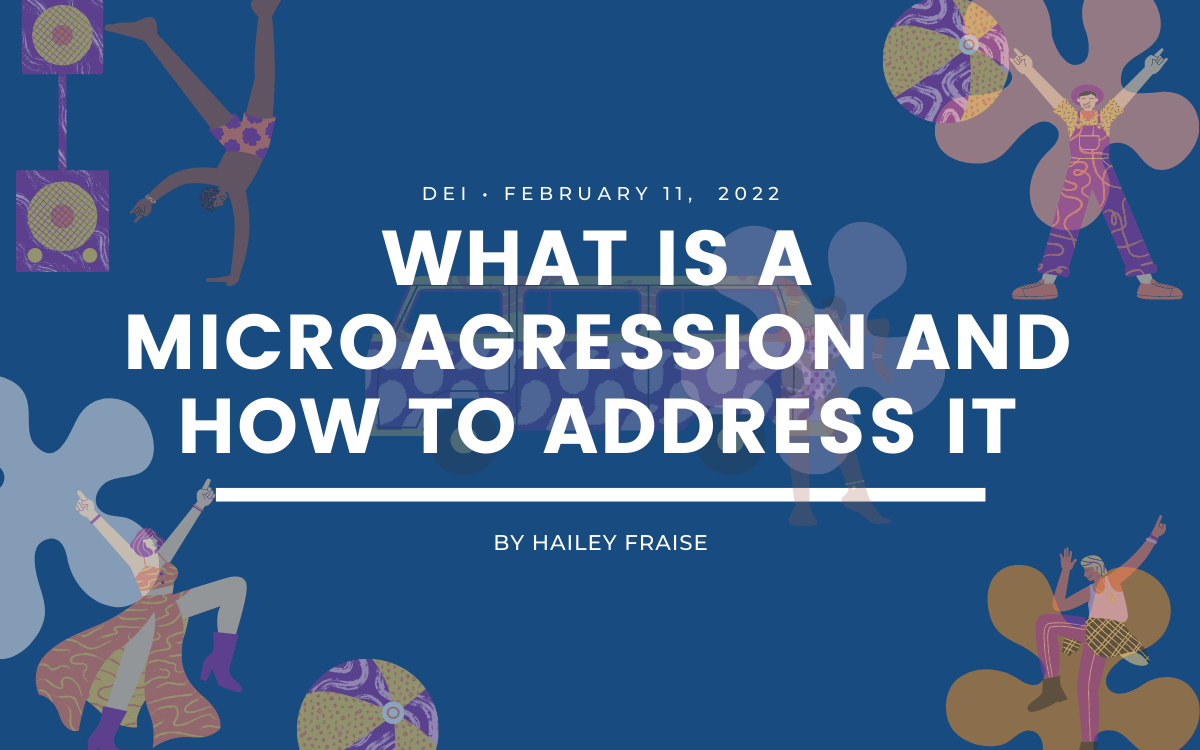What Is A Microaggression and How To Address It
min to read ✭
What is a microaggression?
You’ve probably heard the term microaggression before. Depending on where it’s been introduced, whether thrown around casually with friends or more formally in a working environment, you may have a preconceived notion or still be left wondering what it really means. In order to answer the question, let’s start by stripping down the buzzword-y nature of this term.
Merriam Webster defines a microaggression as, “a comment or action that subtly and often unconsciously or unintentionally expresses a prejudiced attitude toward a member of a marginalized group (such as a racial minority)”, while Oxford Learner states, “an act or a remark that discriminates against one or more members of a minority group, either deliberately or by mistake.” Blending these two up into a colloquial smoothie gives us something like this: A microaggression is when someone says or does something prejudiced or discriminatory against a person (or people) in a marginalized and/or minority group. It may or may not be on purpose.
Both the formal dictionary definitions and the one provided above might seem fairly straightforward. So why is there confusion around what microaggressions are? Where is the disconnect coming from? There is one key piece that leads to the perhaps unfairly deemed controversial status of a microaggression, that the prejudice or discriminatory act may be unintentional. It is entirely possible that someone who says something prejudiced or discriminatory does not realize that what they have said is exactly that. They may be coming from a place of intended humor, or accidental misinformation. While the intention is an important factor, it should not act as a “get out of jail free” card.
So how should microaggression be addressed?
One of the largest problems with addressing microaggressions is the failure of any involved parties to acknowledge that something is, in fact, prejudiced or discriminatory even if that was not the original intention. That being said, when needing to address someone who has just used a microaggression, it is likely worthwhile to proceed as though the microaggression was unintentional, especially if in a formal or work-type environment. This may feel like a common courtesy, but creates grounds for an open, benefit of the doubt, and information-based conversation. It should help eliminate anyone feeling attacked or alienated.
From there, here are some ways to further conversation in a way that should help dig deeper, learn from each other, and ultimately promote empathy.
- Ask for clarification or more information (What did you mean by that? Why do you think that?)
- Acknowledge that there may be a disconnect between the intention behind what has been said and the impact of the statement or action (I understand that you’re joking around by saying that, but I want to express how hurtful that can be.)
- Share your thoughts, feelings, or relevant experience if you feel comfortable doing so
- Challenge the microaggression by offering other perspectives or facts
- In cases where someone insists that they didn’t mean it like that, circle back
Do I always have to get involved?
Your response and level of participation are likely to vary depending on the unique situation, the context, and the type of relationship you have with the individual. While it’s important to speak up, if you are concerned that responding could lead to a larger issue or put you in danger, you always have the right to remove yourself from the situation. Our hope is that getting involved helps you disarm microaggressions and ultimately seek to understand each other on a deeper level.





